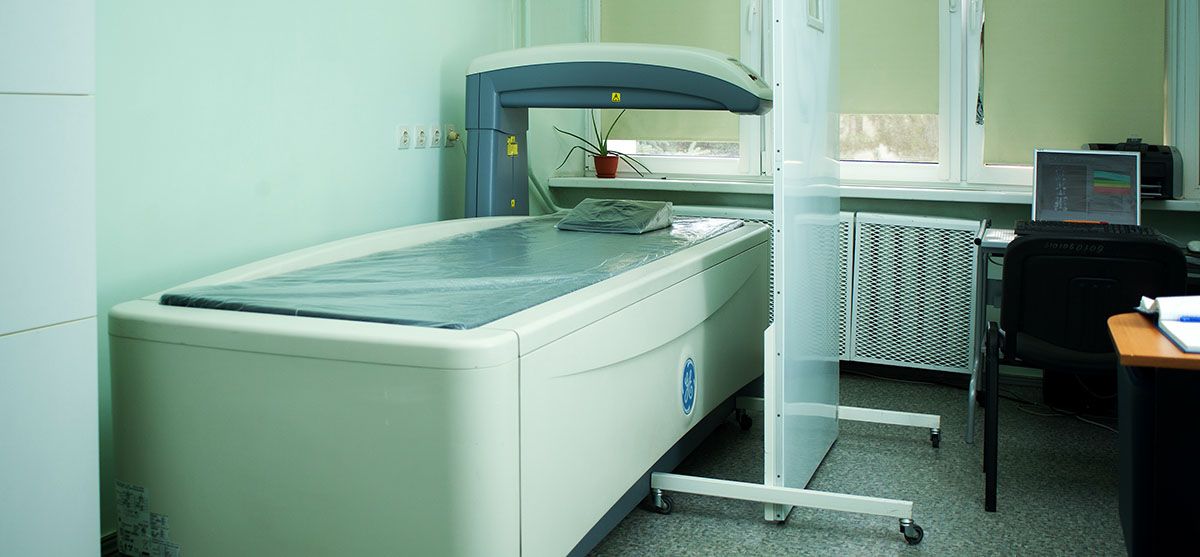
Rheumatology
Rheumatic diseases are highly pervasive and have major social and economic value due to the fact that affect the people of younger and middle working age resulting in early disability. At the present day, rheumatologists all over the world focus their major attention on the early diagnostics of system diseases and the prevention of patients’ disability.
- The following symptoms may indicate the presence of rheumatic disease in patient:
- — the presence of ESR acceleration syndrome;
- — subfebrile condition of unestablished genesis;
- — weight loss;
- — the presence of signs of arthritis;
- — morning stiffness for more than 30 minutes;
- — chronic back pain (mostly – at night-time), lasting for more than 3 months;
- — the presence of skin rash of unknown etiology, photosensitization, relapsing mucosal ulceration;
- — recurrent inflammatory eye lesions (uveitis, iridocyclitis etc.);
- — the presence of lung tissue damage of unclear etiology;
- — thrombosis of diverse localization, particularly in young people.
The RADC has operating rheumatologic service represented by three highly trained professionals. They perform diagnostics and treatment of osteoarthrosis, osteoporosis, rheumatoid arthritis, gout, seronegative spondylarthritis, system connective tissue diseases (systemic lupus erythematosus, systemic scleroderma, polymyositis, mixed connective tissue diseases, rheumatic polymyalgia), widespread vasculitis etc.
The centre is equipped with clinical instrumental basis for the early diagnostics and treatment of rheumatic diseases. The RADC rheumatologic arsenal comprises advanced laboratory investigations (biochemical, immunological): determination of CPK level (inclusive of SW-fraction), myoglobin, LDH; CRP (quantitative technique), anti-double-stranded DNA, antinuclear ANA antibodies (CENP-B, Jo-1, Rib-P, RNP/Sm, Scl-70, Sm, SS-A, SS-B, Chrom, RNP), ANCA (initiated determination of anti – MPO, anti-PR3, anti-GBM), cryoglobulins, С3-С4 complement components, antiphospholipid antibodies, lupus anticoagulant, rheumatoid factor, CVR antibodies, used for the early diagnosis of rheumatoid arthritis, system connective tissue diseases, widespread vasculitis; immunograms with lymphocyte immunophenotyping; determination of osteoporosis markers: blood serum osteocalcin, urine cross-laps, vitamin D level. We also perform protein electrophoresis in blood, urine, immunoglobulin light chain detection (kappa, lambda), beta-2-microglobulin, for the sake of paraproteinemic hemoblastosis exception.
In the course of diagnostic search we widely implement the capabilities of instrumental procedures: X-ray, joint ultrasound investigation, for complex cases — computer and magnetic resonance joint imaging, X-ray osteodensimetry. There also takes place the performance of vascular doppler sonography, if required, the outlined changes can be précised by means of SCT-angiography, or using MRI with bloodstream contrasting. We use the methods of functional diagnostics: electrocardiography, electromyography. There are prescribed exploratory joint punctures with further synovial fluid test (cytological, bacteriological tests, PCR method, determination of uric acid crystals under polarizing microscope). Morphological examination of biopsy skin-muscle flap specimen is used to diagnose vasculitis and polymyositis. The performance of differential diagnostic procedure with blood system diseases is associated with lymph node biopsy and following histological and immunohistochemical investigation.
The RADC rheumatologic services concentrate peculiar attention on diagnosing inflammatory joint diseases at early stages and respective prescription of baseline therapy. The most susceptible method for diagnosing significant changes in joints in early arthritis is represented by magnetic resonance imaging. This technique makes it possible to diagnose soft tissue changes, inclusive of pannus, synovitis, cartilage thinning, tenovaginitis, and also focal bone edema, as the forerunner of erosions or erosion which are hard to visualize on joint X-ray images (for instance, wrist joints). In diagnosing seronegative spondylarthritis, this method aid early symptom detection of inflammatory edema related to various sacroiliac joint anatomic structures which precede destructive processes.
The RADC rheumatologist pays peculiar attention to the differentiated diagnostics of connective tissue diseases with paraneoplastic processes, using all the available diagnostic capabilities. Treatment modes, employed by the RADC rheumatologic service conforms to federal standards.
Examination of patient may take place on an outpatient basis using all the available diagnostic capabilities of the centre, and within 24-hour diagnostic and treatment department, when the need for hospital admission is caused by the diagnostic complexity of a disease or patient’s remote residence.
Patients without Obligatory medical insurance policy and appointment card may undergo RADC-based investigation within the system of paid services.

